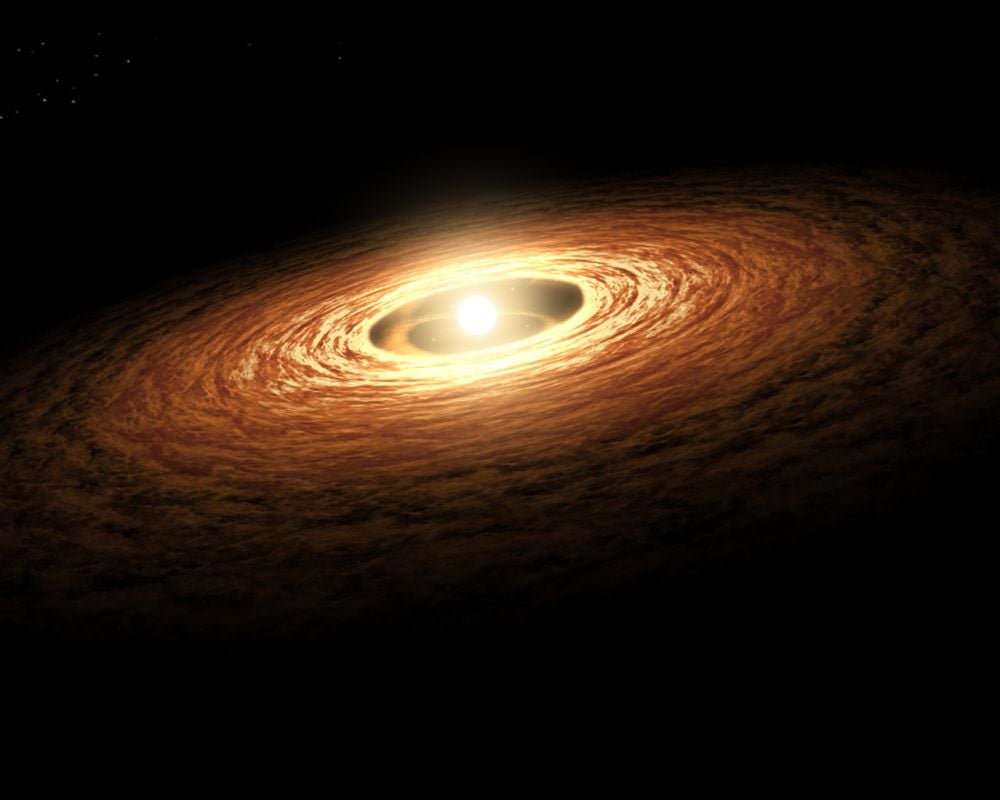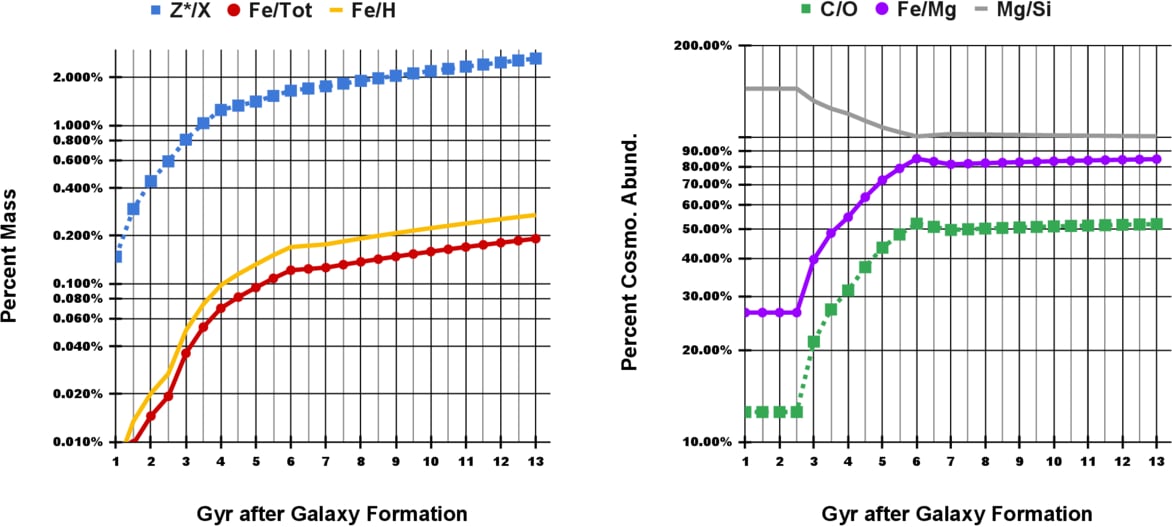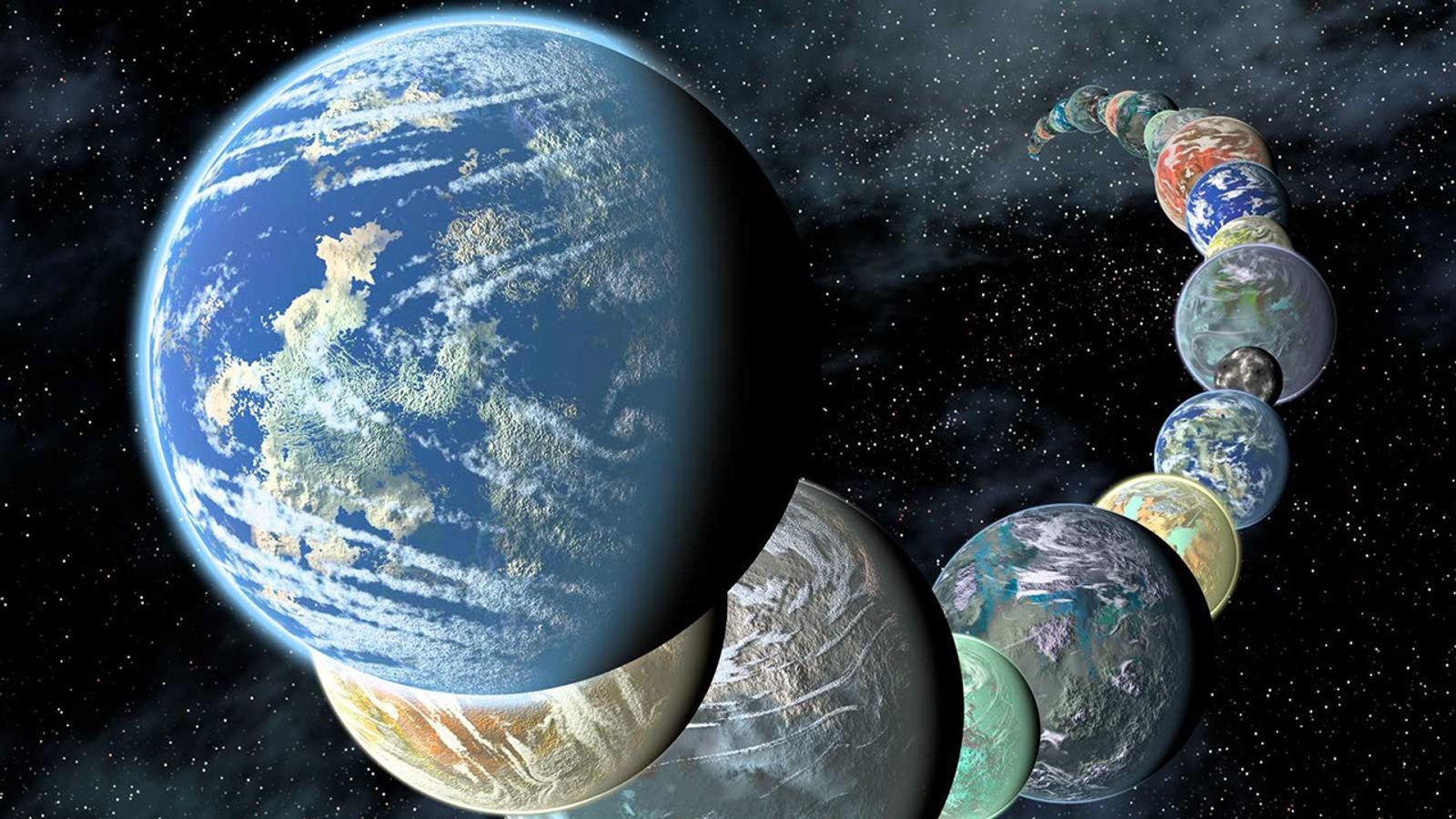Metallicity is a fundamental part of the Universe. The Big Bang created mostly hydrogen, the simplest and lightest element, and a tiny bit of helium, the second lightest element. Those elements gather together in large quantities to form stars. For rocky planets to form, stars had to form first.
Stars forge the heavier elements—called metals in astronomy—through nucleosynthesis, then spread those metals out into interstellar space. As a result, rocky planets like Earth can eventually form. The key element here is time.
As generations of stars live and die, the metallicity in their home galaxy slowly rises. As the metallicity rises, different types of planets can form. Even different types of rocky planets. That’s the key idea behind new research.
The research is titled “Effect of Galactic Chemical Evolution on Exoplanet Properties,” and it’s published in The Astrophysical Journal Letters. The lead author is Jason Steffen, associate professor with the University of Nevada Las Vegas Department of Physics and Astronomy. The research produces a new model that tries to capture the complexity of cosmochemistry over time and how it affects planet formation.
“Materials that go into making planets are formed inside of stars that have different lifetimes,” said lead author Steffen in a press release. “These findings help explain why older, rocky planets are less dense than younger planets like the Earth, and also suggest that the necessary ingredients for life didn’t arrive all at once.”
We all love our resplendent Earth, where life thrives in every imaginable niche and a blue sky comforts us with its calming light. It can seem like it was designed for us. But the reality is that Earth, like every other planet, is basically formed from the wreckage of dying stars. But stars die on different timescales according to their masses, and that affects the type of wreckage, or planetary building blocks, available. That in turn determines the nature of the planets that form.
 *This artist’s illustration shows a young star with its protoplanetary disk. Planets form in these disks, and they’re chemically enriched by previous stars. The degree and type of chemical enrichment determines many aspects of type of rocky planets that can form. Image Credit: NASA-JPL*
*This artist’s illustration shows a young star with its protoplanetary disk. Planets form in these disks, and they’re chemically enriched by previous stars. The degree and type of chemical enrichment determines many aspects of type of rocky planets that can form. Image Credit: NASA-JPL*
The greater a star’s mass, the heavier the metals it produces, and the sooner it produces them. Lower mass stars producer lighter metals but they appear later, since lower mass stars have longer lifetimes. So when heavy mass stars die after only a few million years, they enrich their surroundings with elements like oxygen, silicon, and magnesium. These elements make up the bulk of a rocky planet’s outer layers. About three quarters of Earth’s crust is oxygen and silicon, for example. The mantle is largely oxygen, silicon, magnesium, and iron.
“We find that the early abundances of elements formed from the evolution and death of high-mass stars (such as oxygen, silicon, and magnesium) yields planets with larger mantles and smaller cores. The later addition of elements produced in low-mass stars (such as iron and nickel) causes the planet cores to become relatively larger,” the authors write in their research letter.
This results in less dense planets orbiting older stars compared to younger stars. This is what scientists have found in the known exoplanet population. “These results are broadly consistent with recent observations of planet properties from stars of varying ages,” the authors explain.
 *These graphs from the research show how cosmochemistry in a galaxy changes over time. They show the “change in the initial chemical composition through important elemental ratios,” the authors explain.The left graph shows the initial percent masses in blue, the ratio of iron over total elements in red, and the ratio of iron over hydrogen in yellow. The right graphs shows initial percent cosmological abundances of select elemental ratios, including carbon/oxygen in green, iron/magnesium in purple, and magnesium over silicon in green. Image Credit: Steffen et al. 2025. ApJL*
*These graphs from the research show how cosmochemistry in a galaxy changes over time. They show the “change in the initial chemical composition through important elemental ratios,” the authors explain.The left graph shows the initial percent masses in blue, the ratio of iron over total elements in red, and the ratio of iron over hydrogen in yellow. The right graphs shows initial percent cosmological abundances of select elemental ratios, including carbon/oxygen in green, iron/magnesium in purple, and magnesium over silicon in green. Image Credit: Steffen et al. 2025. ApJL*
The above graphs are complex but important.
The Fe/Mg ratio is important because it can trace the expected mass ratio between a rocky planet’s crust and mantle. The Mg/Si ratio is likewise important. It predicts the type of volcanic rock on the planet. If the rock is depleted in Si, it likely has a thick crust that inhibits extrusive volcanoes and plate tectonics, both thought to be important for habitability. “Our results suggest that early planets have higher Mg/Si ratios, which make Si-depleted planets with thick crusts,” the authors write.
Earth’s habitability relies on numerous factors, including its iron core. That’s where our planet’s protective magnetic shield originates, and the research shows that iron content was lower earlier in the Milky Way’s history. This implies that habitability could be more likely later in a galaxy’s lifetime.
“Planets that form around early-generation stars in the Milky Way will have lower iron content, implying that planets around those stars will have smaller cores,” the authors explain.
The takeaway is that the ingredients necessary for a habitable rocky planet are available at different times. A very young galaxy is unlikely to form many habitable planets. But the progression isn’t necessarily uniform and straightforward.
The main conclusions are that denser planets form as a galaxy evolves, and at the same time their radii decrease. Also, as the Fe/Mg and C/O ratios rapidly decrease between 2 and 6 gigayears, there’s a decrease in Mg/Si. The amount of iron available doubles between 1 and 5 gigayears, then remains constant afterward. Also, enrichment by different stellar sources can change the [core mass fraction](https://iopscience.iop.org/article/10.3847/2041-8213/abf7ca#:~:text=The%20extent%20of%20planetary%20core,(O’Brien%20et%20al.) of planets by as much as 10%.
“One implication of these findings is that the conditions for life don’t start immediately,” says Steffen. “A lot of the elements needed for a habitable planet, and for living organisms, are made available at different times throughout galactic history.”
The authors explain that their model can be extended as our understanding of rocky exoplanets advances. Missions like the JWST, PLATO, and others will generate a more accurate understanding of rocky exoplanet properties.
“Such extensions will establish a more accurate understanding of the changing properties of planets over time and turn rocky planets into probes of the Galaxy’s history,” the authors conclude.
